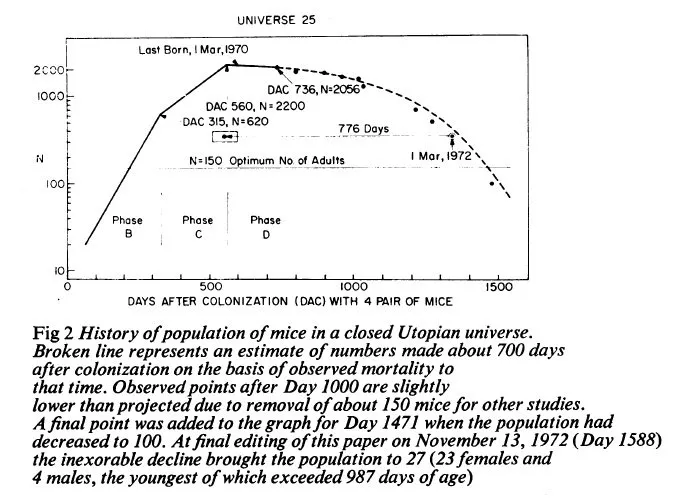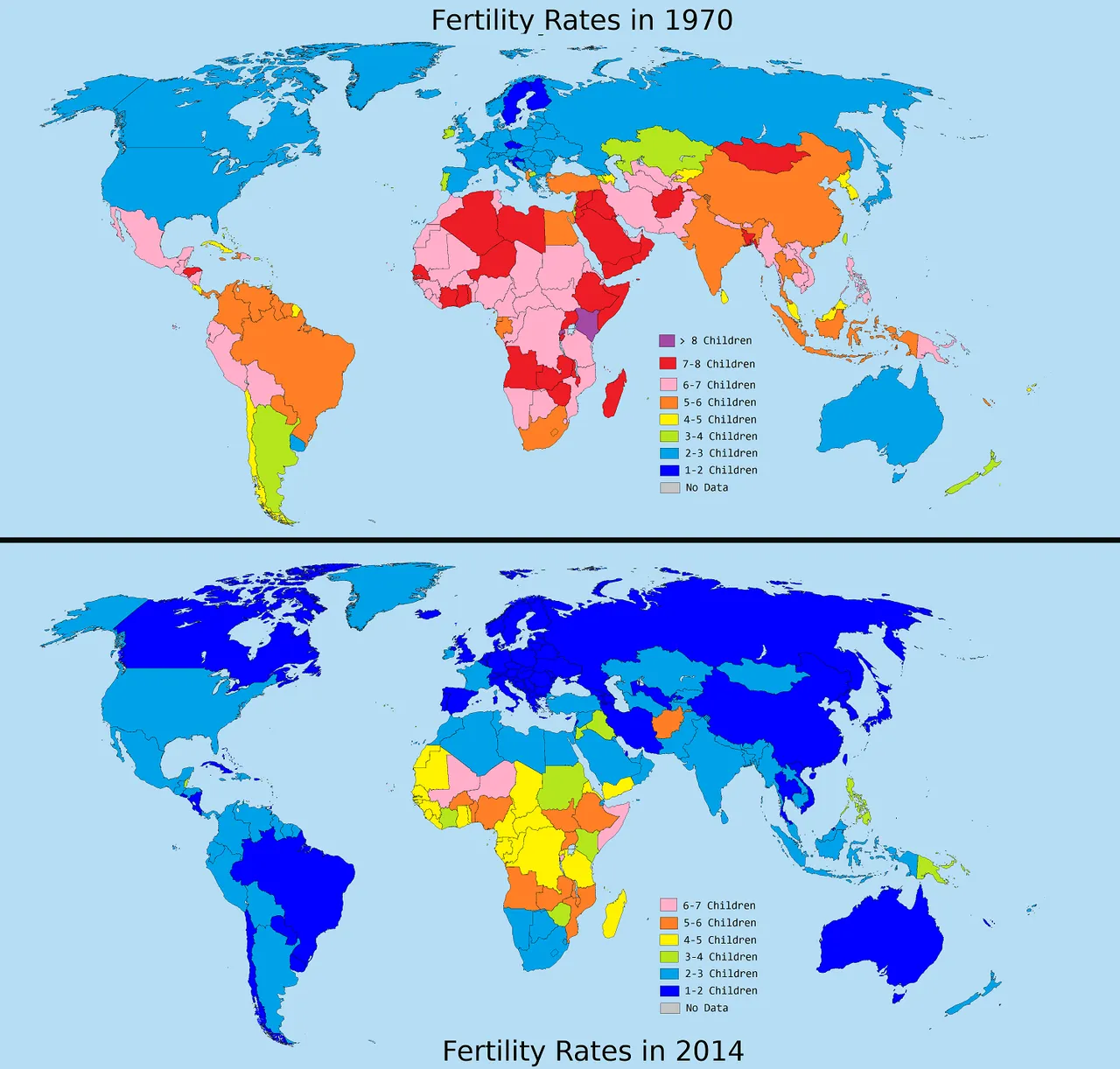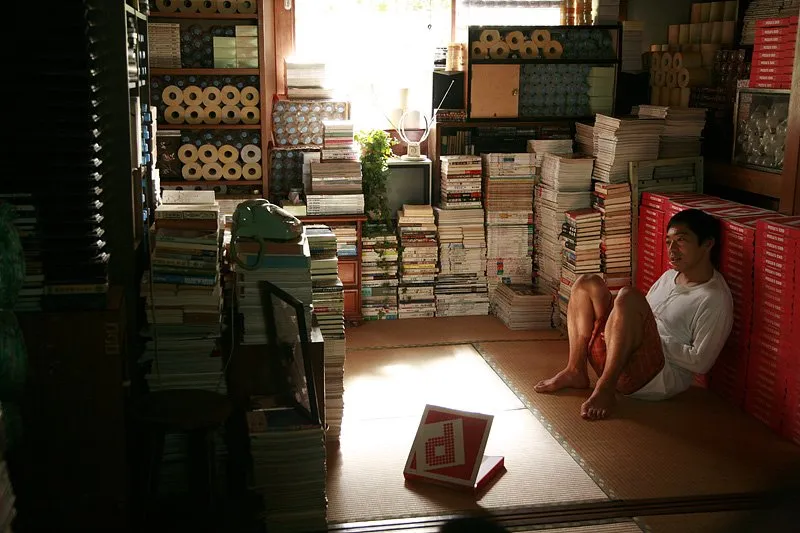Population density in large cities increases with every year, while the cities are growing up, not breadth. We have a huge uninhabited areas of the world, but we prefer to live in Megapolises, which created more comfortable conditions for life. Every year there are dozens of new social phenomena. Despite the fact that people live together, communication between each other is minimized, more and more people feel lonely and unhappy, while being in the crowd. Why does it happening and what can we expect next? In 1968 American psychologist John B. Calhoun has tried to answer on this question with his experiment. In this article i want to compare our world with the "Universe 25".

"Universe 25"
July 9, 1968. Scientists have built a mouse Paradise. It was the closed box with wall height of 1.37 meters area of 2.57 x 2.57 m with optimum temperature +20 degrees. There were 256 boxes inside (nests for mice), each designed for 15 individuals. The corral was completely safe for mice, it was always clean, had unlimited supplied food and water. The food was designed for the 9500 mice, water for the 6140, the area a comfortable stay for 3840.

Calhoun inside the mouse Paradise
Phases A-B.
In the beginning Scientists had placed there 4 pairs of young mouse. They have begun actively proliferate. The first period: Phase A, it lasted 104 days before the birth of the first cub. It has very fast moved into the second phase B (a sharp jump of reproduction of mice). The population doubled every 55 days, but after 315 days of the experiment the growth rate of the population has been slowed down. Came the third phase C. The number of mice has doubled only every 145 days.
Phases C (Outcasts).
There was 600 mice At the beginning of phase C, they began to notice the limited of space for living. Began the creation of social hierarchy, now we can see a new caste- Outcasts. A young mouse who had been banished by the adults (due to the ideal conditions the life expectancy has increased. Old individuals were expelled young, to maintain their social status). Outcasts were badly beaten and lived in the center of the box. They are not only constantly subjected to attacks by older individuals, but also fought among themselves.
After the expulsion the males fell in depression, their degree of aggression fell, they ceased to protect their pregnant females. Because of this, females become more aggressive to protect their offspring, but this aggression eventually became uncontrollable. Females started to attack every one, they often kill their cubs and went to the far paddocks, refusing reproduction. Practiced cannibalism. It was the caste of female-recluses, who refused from their social roles and reproduction. Because of it the increase in the population of mice fell significantly, and the infant mortality rate increased.
Phase D, or the phase of the death (560 day. "the beautiful ones" and "female-recluses" )
There is a new caste of "the beautiful ones". It consisted of males who refused to mate, compete for females, defend their territory, behaved sluggish, treated with indifference to the rest of the mice. All they did was just ate, drank, slept, cleaned their fur, avoid any conflicts, and didn't want to fulfill social roles and responsibilities. Calhoun called them "Beautiful", because their didn't have any traces of fighting, blood, scratches. Over time "the beautiful ones" and "female-recluses" became the majority of the mouse population. They occupied the far nests, pulling away from the rest. And those and others did not want to mate.
The average age of individuals was up 776 days (equivalent to 77 years of human life), 200 days exceeds the maximum limit of reproductive age. The mouse lived for a long time, infant mortality reached 100% level, while the birth rate was soon reduced to zero. Mouse society began to deteriorate, to regress. Mice have practiced a variety of deviant behavior, homosexuality, spontaneous aggression. Under conditions of abundance of food the mice practiced cannibalism, females refused to educate the young and killed them.
The limit of population stopped at around 2200 individuals (1 March 1970), after that the decline began. Calhoun completed the experiment on 22 June 1972, with population of 122 individuals (22 males and 100 females), all of which have already reached reproductive age. There was no sense to continue the experiment.

The death of the spirit
At the end of the experiment Calhoun made the conclusion that a society of mice went through 2 deaths. The first one is "the death of the spirit" (When newborn individuals did not find a place in the social hierarchy of the "mouse Paradise", there has been a lack of social roles in ideal conditions with unlimited resources, any open confrontation between adult and young rodents) and the death of the body. When a significant part of the population died from the "first death" the whole colony is doomed to extinction, even in conditions of "Paradise".
Our society.
Now look at our world. Since 1945, humanity lives in a very comfortable environment, no mass infections, war, starvation, the conditions are very similar to the conditions in the pen for mice. In developed countries birth rates are falling, today we have only 1-2 child in one family (50 years ago it was 3-4). Less of adults actually ready to create a family. The life expectancy of the population increases. World population growth provides only by backward countries. Most of the population lives in large cities with high population density ( mice in the experiment), and not dispersed over the area.

How many children was born by 1 woman (1970 VS 2014)



The fisrt outcasts.
In the early 90s a young Japanese psychiatrist Tamaki Saito has noticed the increase of complaints from parents on children, who abruptly, without any apparent reasons locked in their rooms. This kids didn't want to do anything and communicate with others people. It wasn't a short-term self-isolation, parents have been consulted to the doctors after several months of this behavior. Some teenagers were in isolation for several years already. They left the room only for wash (once a month or less), opened the door only for take a food left by their parents, day by day didn't show any activity, could sit quietly in the room looking at the wall.
Saito has begun to explore this phenomenon and found that the first mention of such a behavior appeared in 1970s. Saito introduces the term Hikikomori (Hiki), which in Japanese mean "being in solitude", "pulling inward, being confined" in fact it was the acute social isolation. It was difficult to collect accurate information about the number of such cases, given the traditional closeness of Japanese families, their unwillingness to consult the psychologists, fearing to disgrace their family in the eyes of society.

Saito suggested that hikikomori take 1% of the population (1.2 million people). In 2010, the government of Japan said that country's population counts of 700.000 official hikikomori (we all know that the government likes to reduce the negative digits).
Today we can see more modern terms as Otaku, NEET ("Not in Education, Employment, or Training" in Europe) and Basement dwellers (USA).
Why have Hiki appeared in Japan? Limitations in armaments after the Second World War allowed to the country to develop economic and social aspects of society. We all know that today Japan is the most developed country in technology, economic stability for the population (the absence of inflation a few last years) and therefore social welfare. Unemployment benefits allows a nice place to live. The average life expectancy is 76 years (men) and 82 (women). That allows family to create a good savings and provide financial support to offspring (Hiki). The high population density given the advanced technologies generate many social phenomena, which later spread all over the world. Popular trends from Japan first apply to USA and Europe, precisely because of their (countries) level of social and economic development is closest to Japan.
Hikikomori are not the result of a mental disorder, they are "children" of sociology, first of all. Due to population density and life expectancy all social roles already busy, people don't have sufficient motivation to work (because your work will not bring any benefit, it will be work for work's sake), thus it is impossible to self-determination. They don’t see any point to spent their time and power to achieve the requirements of modern society. The person ceases to see the meaning of her presence in the circle of society. At the time of detection by Dr. Saito hikikomori, their average age was 21 years, now for 32 years.
According to the government of Japan, 1.5 million people are on the verge of becoming a Hiki. This means that people choose this style of existence after attempts to become a part of society when they are already adults, not teenagers with no experience, as it was in the beginning of phenomena.
Important point: more than 90% of Hiki - men. Why? Because for woman is much easier to determine her social function-through the birth of children. Hikikomori is it's not eternal curse, it sometimes happens that after a few months or years, the man returns to society. But documented cases of 20 years of self-isolation.
Although I wrote above that Otaku, NEET and basement dwellers, they display the same social problems that Hiki. Thereby indicating a serious problem of human development:
the number of required social roles, considerably less than the number of people able to occupy these roles. We have faced with overcrowding, not only in physical but also in mental terms.
***
Today we also can see "the beautiful ones" too (young people who don't have any goals in life, don't seek to achieve anything, don't want to do anything, just live according to their basic needs for sleep, food and entertainment). Due of automation and robotization of production reduced the number of work places, younger generations have less opportunity to find a job. The power in the hands of the older generations, heads of corporations and big business.
Also we can clearly see the emergence of females-singles. Women who appeared because of the weakness of modern men. They assume the functions of men to provide themselves, protect, take positions in society that previously could occupy only men. They are not going to have children.
This is not a prediction, but one of the models of development of our society, which may be. But we have one significant advantage over the mice. We create our own "box", not the outside power (experimenter), and we can change the rules and conditions inside it, the main thing not to be late.
Sources:
Experiment, photo and diagram: Calhoun, John. Death Squared: The Explosive Growth and Demise of a Mouse Population
Hikikomori
Img after the experiment description: 1,3, 2, 4, 5